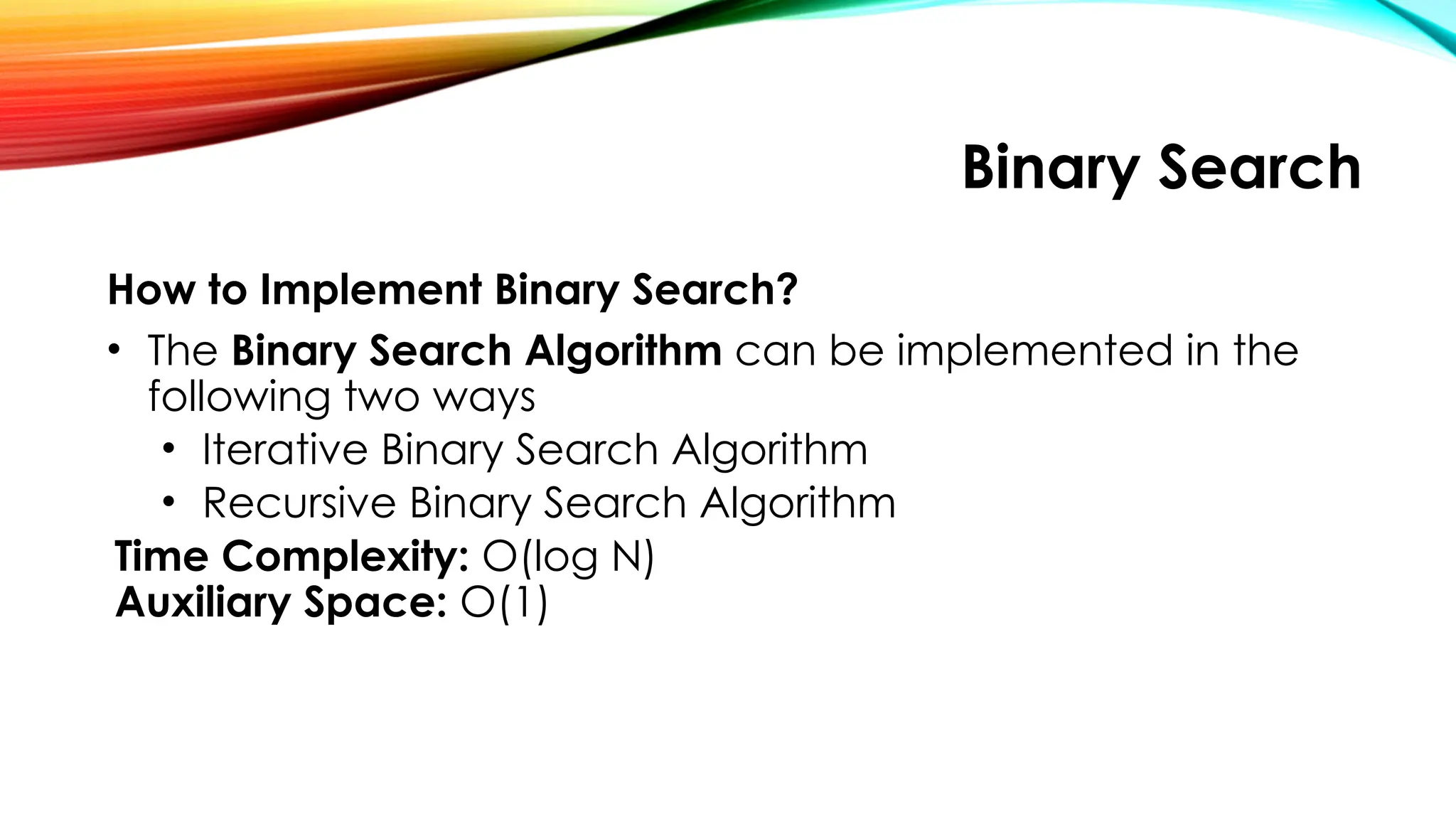Small and Medium Enterprises (SMEs): Offering micro and small enterprise loans to support entrepreneurship and job creation.
Large Corporations: Including partnerships with entities like Lemi National Cement PLC, indicating a focus on supporting larger economic projects.
Agricultural Sector: Providing loans for energy supply technologies and agricultural inputs
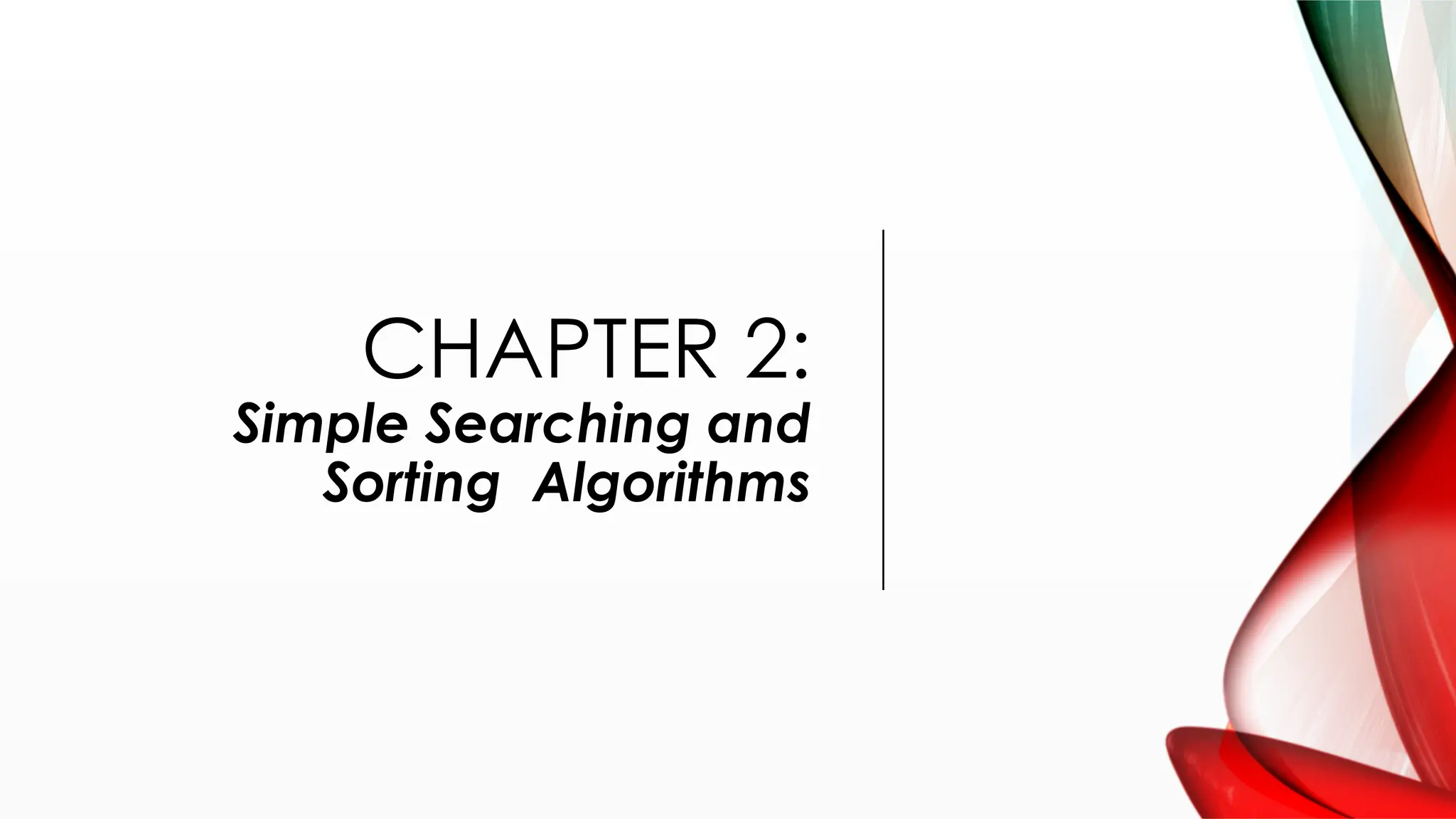
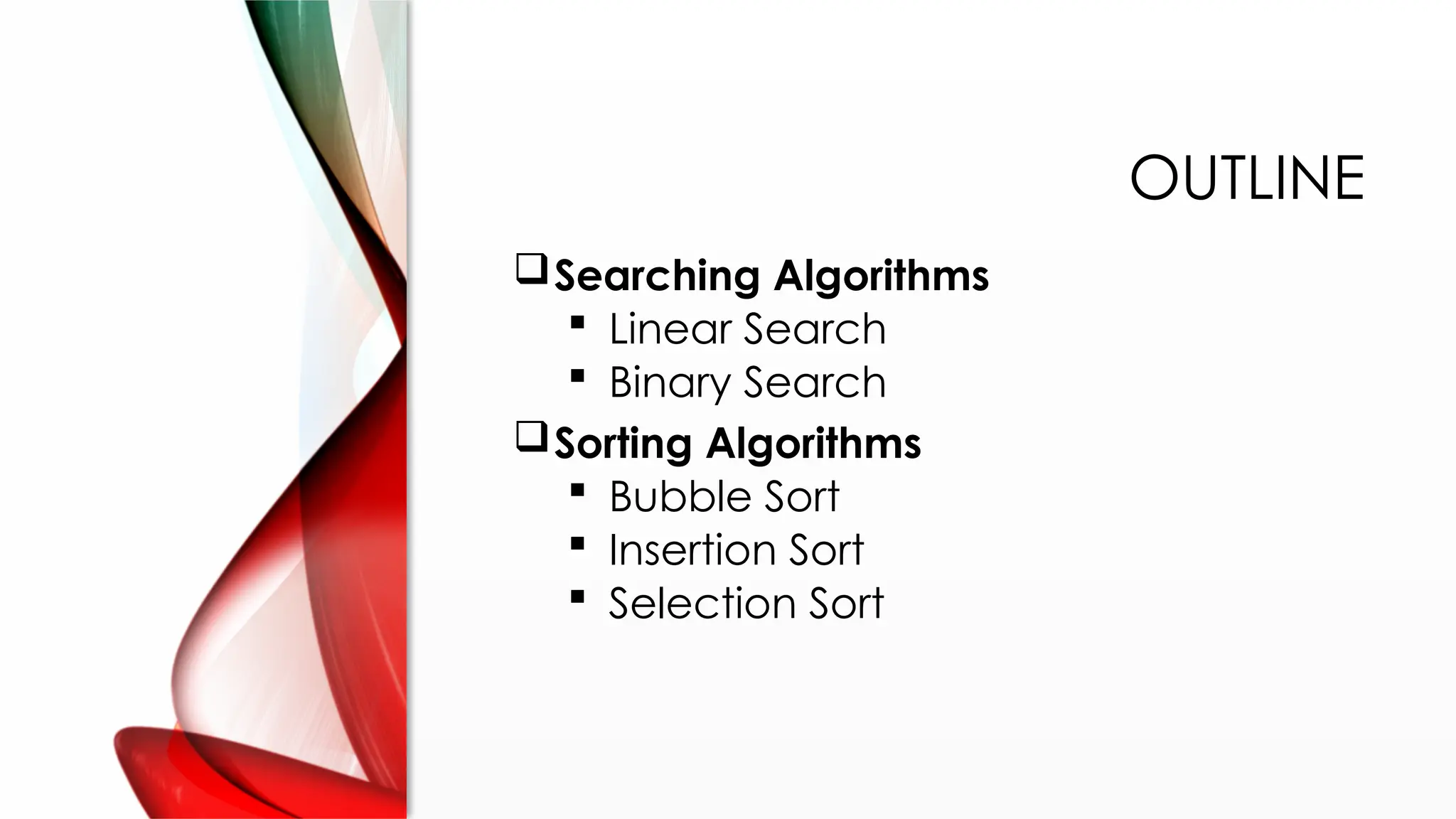
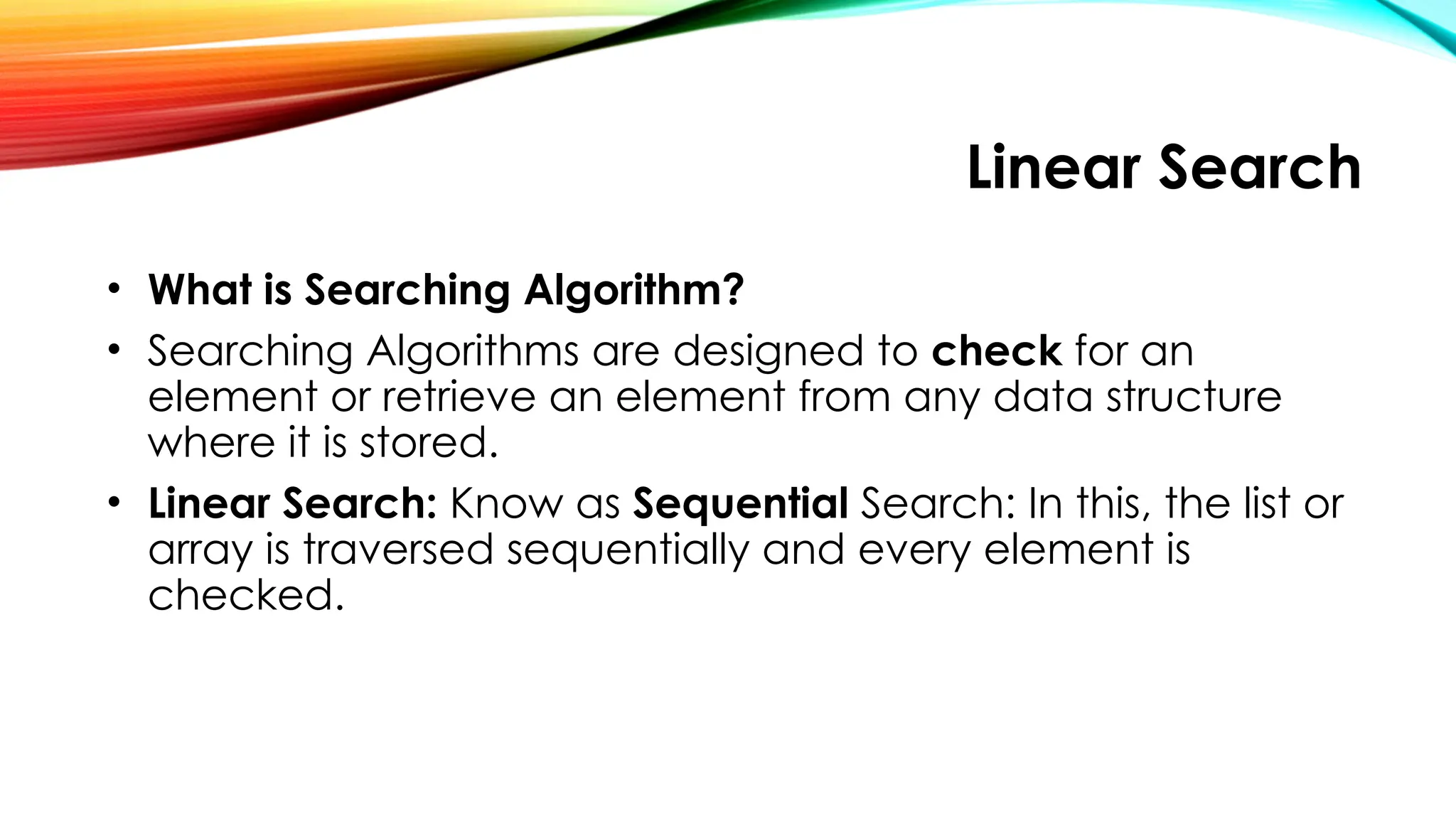

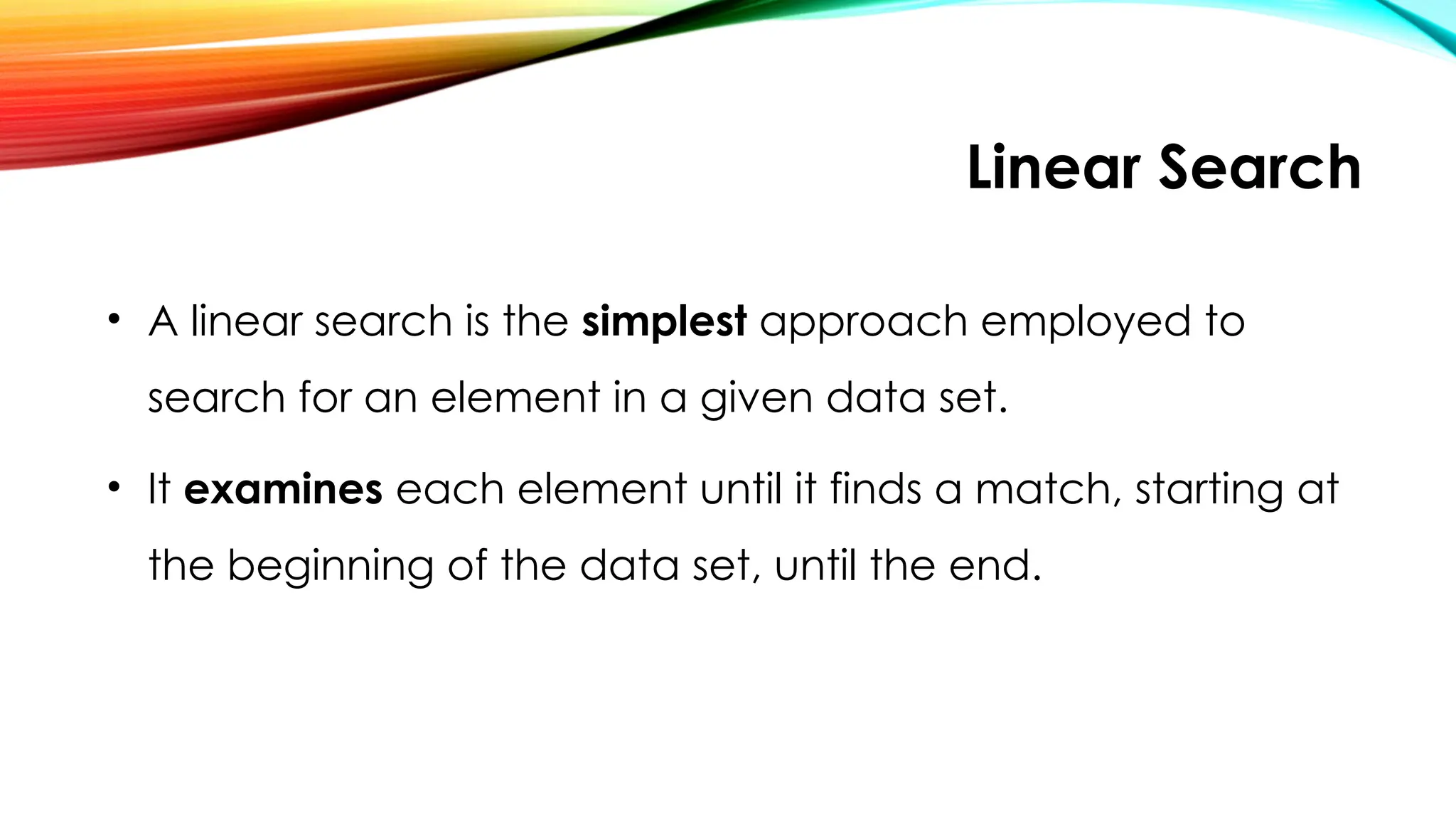
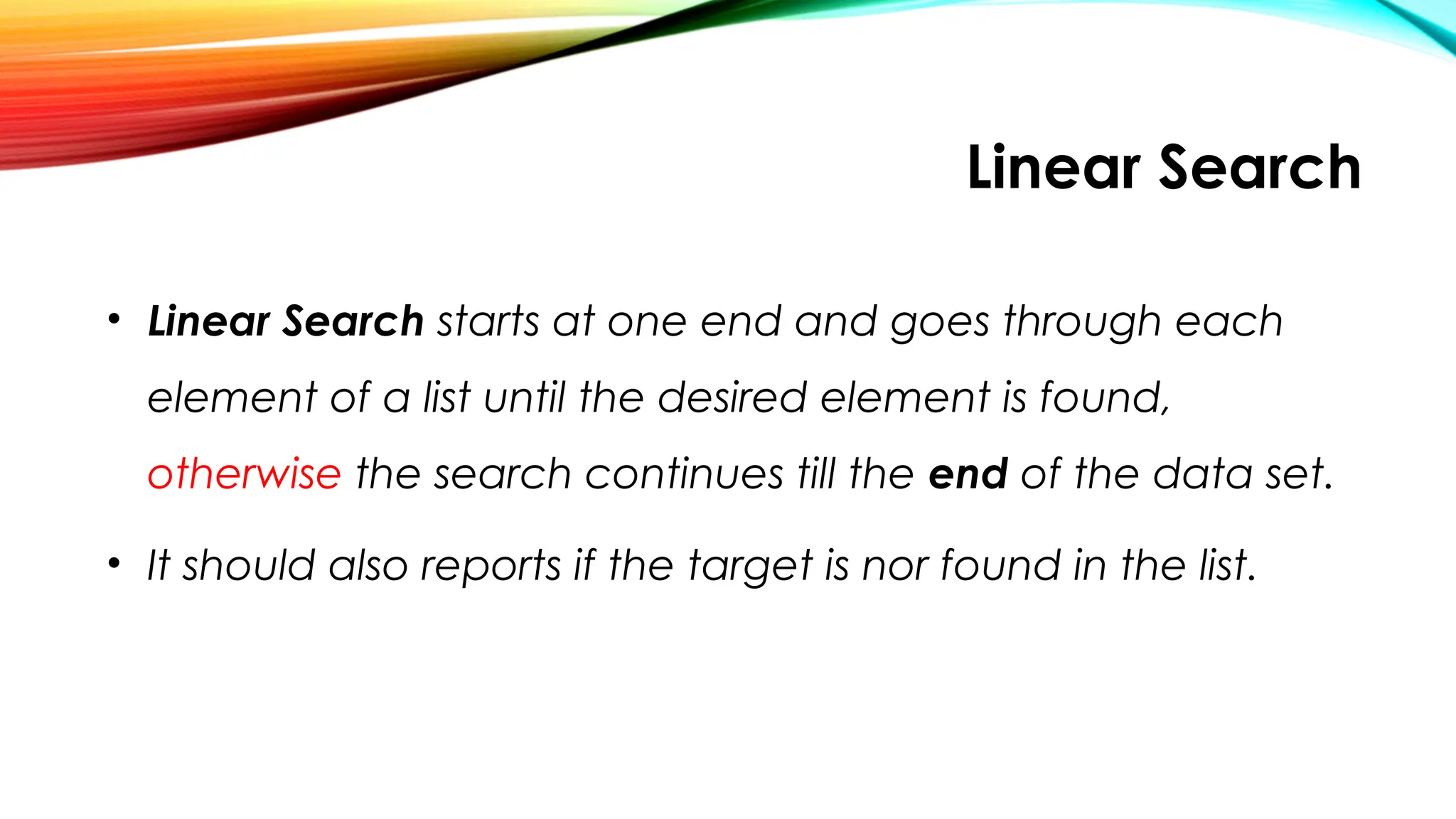
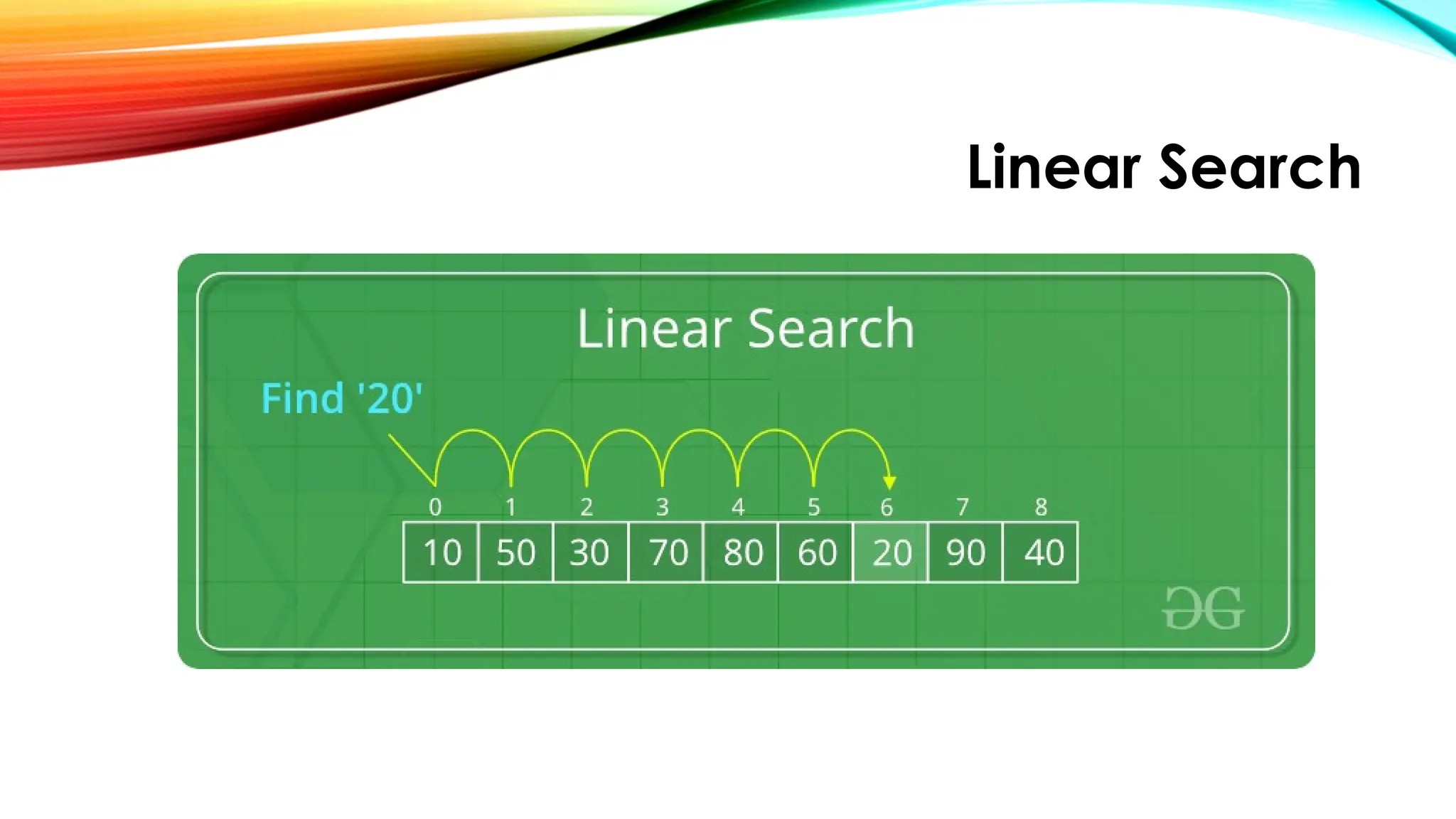
![Linear Search
How Does Linear Search Algorithm Work?
Every element is considered as a potential match for the
key and checked for the matching.
If any element is found equal to the key, the search is
successful and the index of that element is returned.
If no element is found equal to the key, the search yields
“No match found”.
For example: Consider the array arr[] = {10, 50, 30, 70,
80, 20, 90, 40} and key = 30.](https://image.slidesharecdn.com/chapter2simplesearchingalgorithms-250922083115-051aed47/75/CHAPTER-2-Simple-Searching-Algorithms-pptx-8-2048.jpg)
![Linear Search
Step 1: Start from the first element (index 0) and
compare key with each element (arr[i]).
Comparing key with first element arr[0]. SInce not equal,
the iterator moves to the next element as a potential
match.](https://image.slidesharecdn.com/chapter2simplesearchingalgorithms-250922083115-051aed47/75/CHAPTER-2-Simple-Searching-Algorithms-pptx-9-2048.jpg)
![Linear Search
Comparing key with next element arr[1]. Since not equal,
the iterator moves to the next element as a potential
match.](https://image.slidesharecdn.com/chapter2simplesearchingalgorithms-250922083115-051aed47/75/CHAPTER-2-Simple-Searching-Algorithms-pptx-10-2048.jpg)
![Linear Search
Step 2: Now when comparing arr[2] with key, the value
matches. So the Linear Search Algorithm will yield a
successful message and return the index of the element
where key is found (Here 2).](https://image.slidesharecdn.com/chapter2simplesearchingalgorithms-250922083115-051aed47/75/CHAPTER-2-Simple-Searching-Algorithms-pptx-11-2048.jpg)
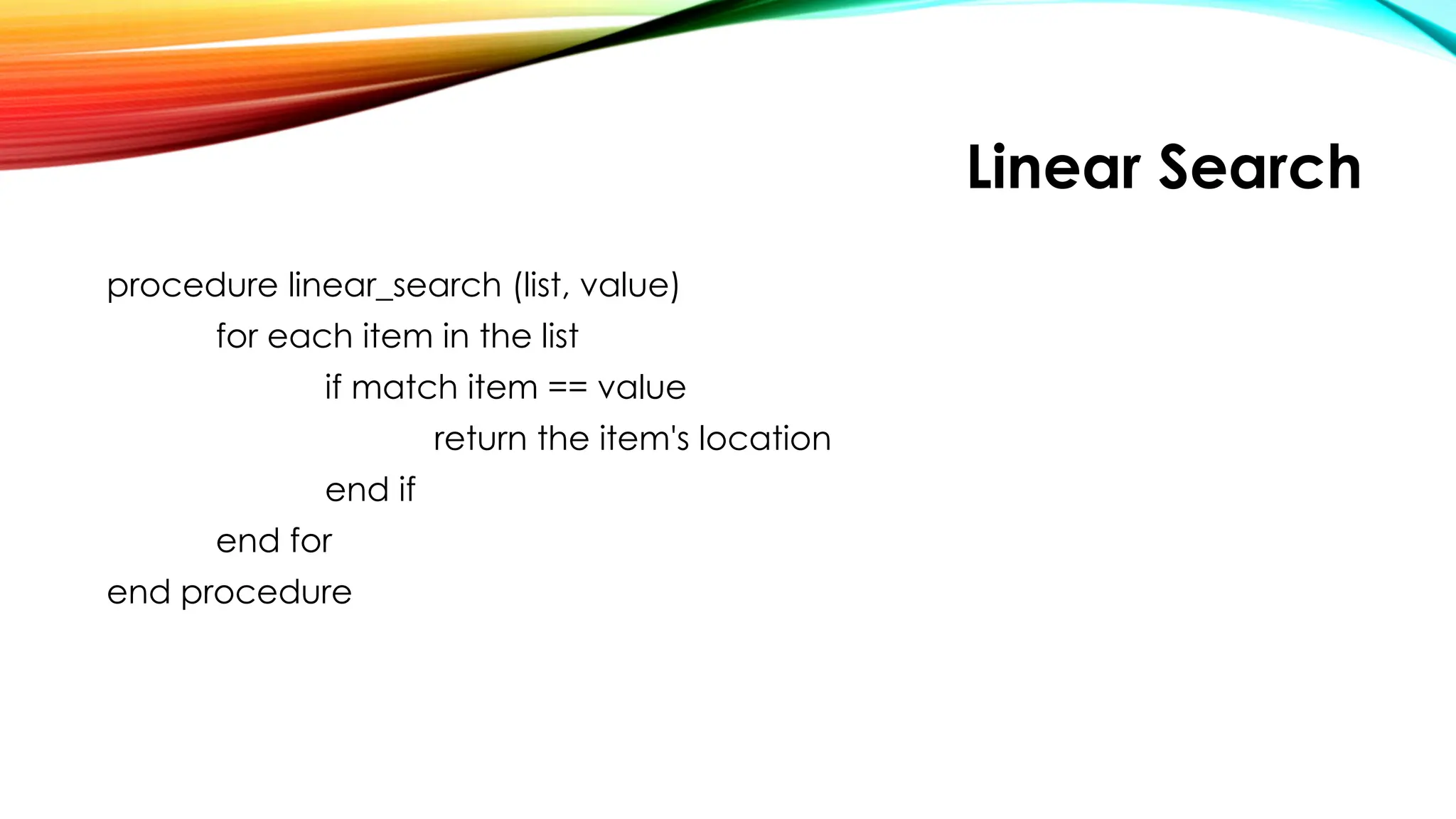
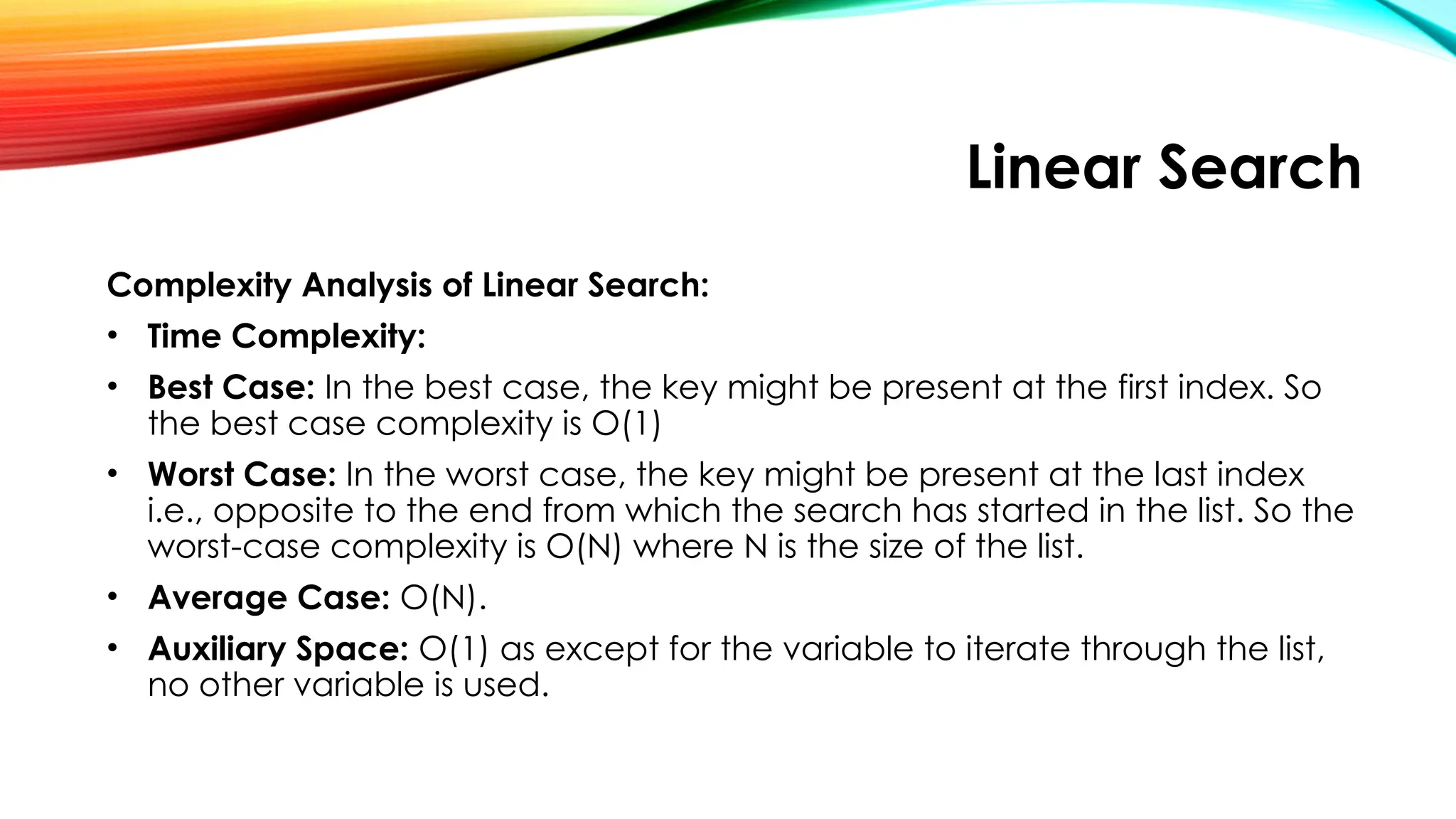
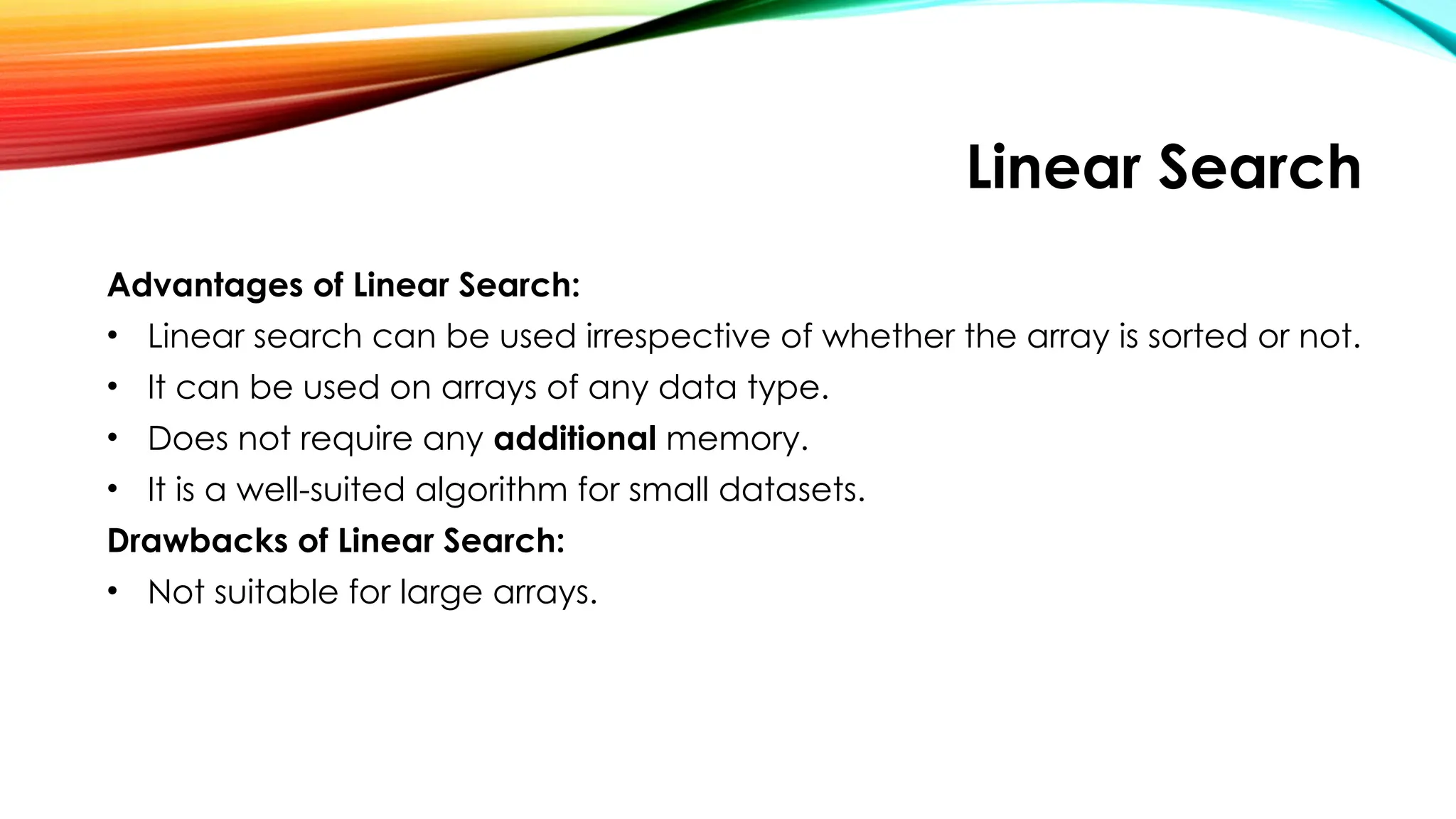
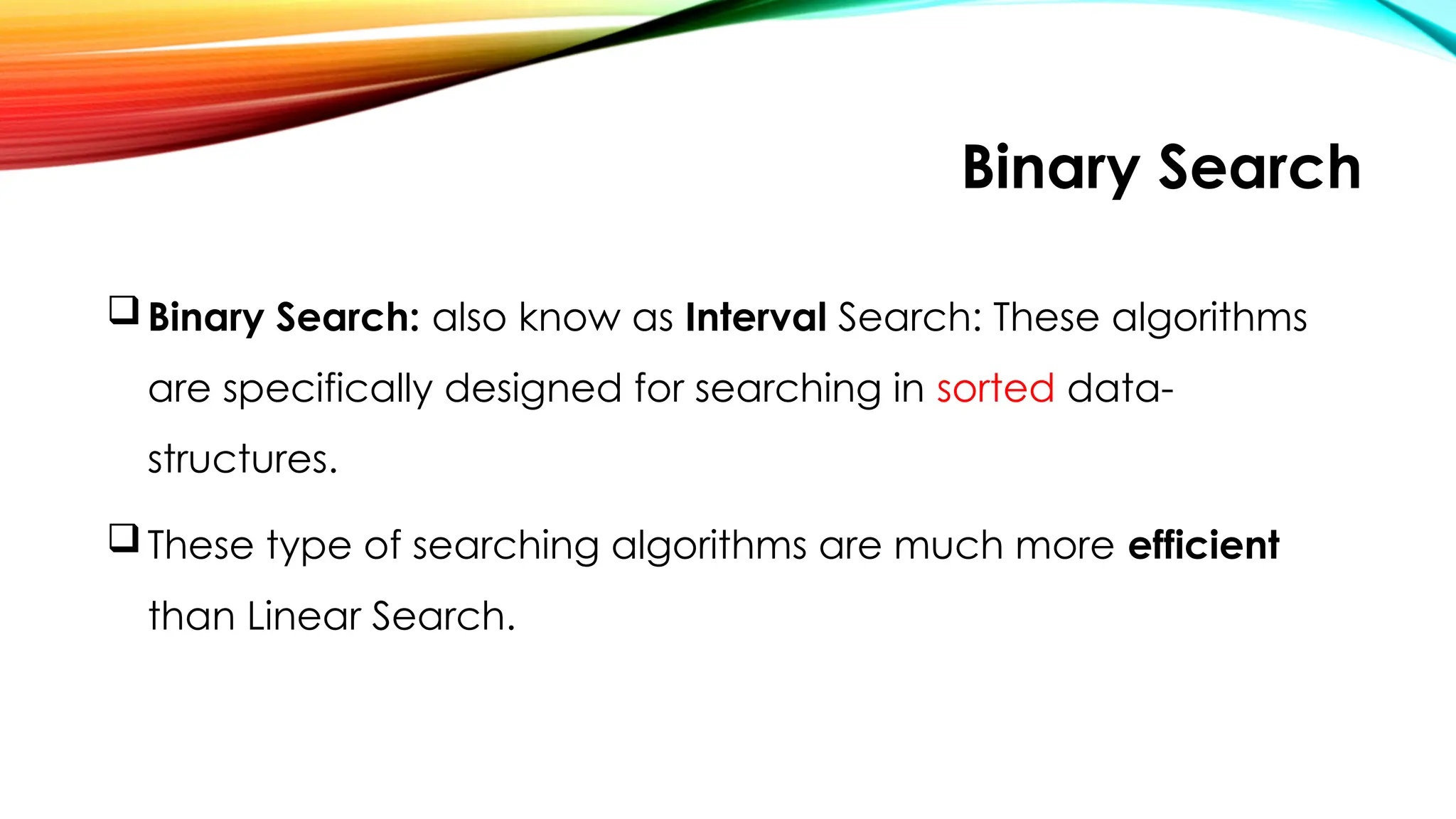
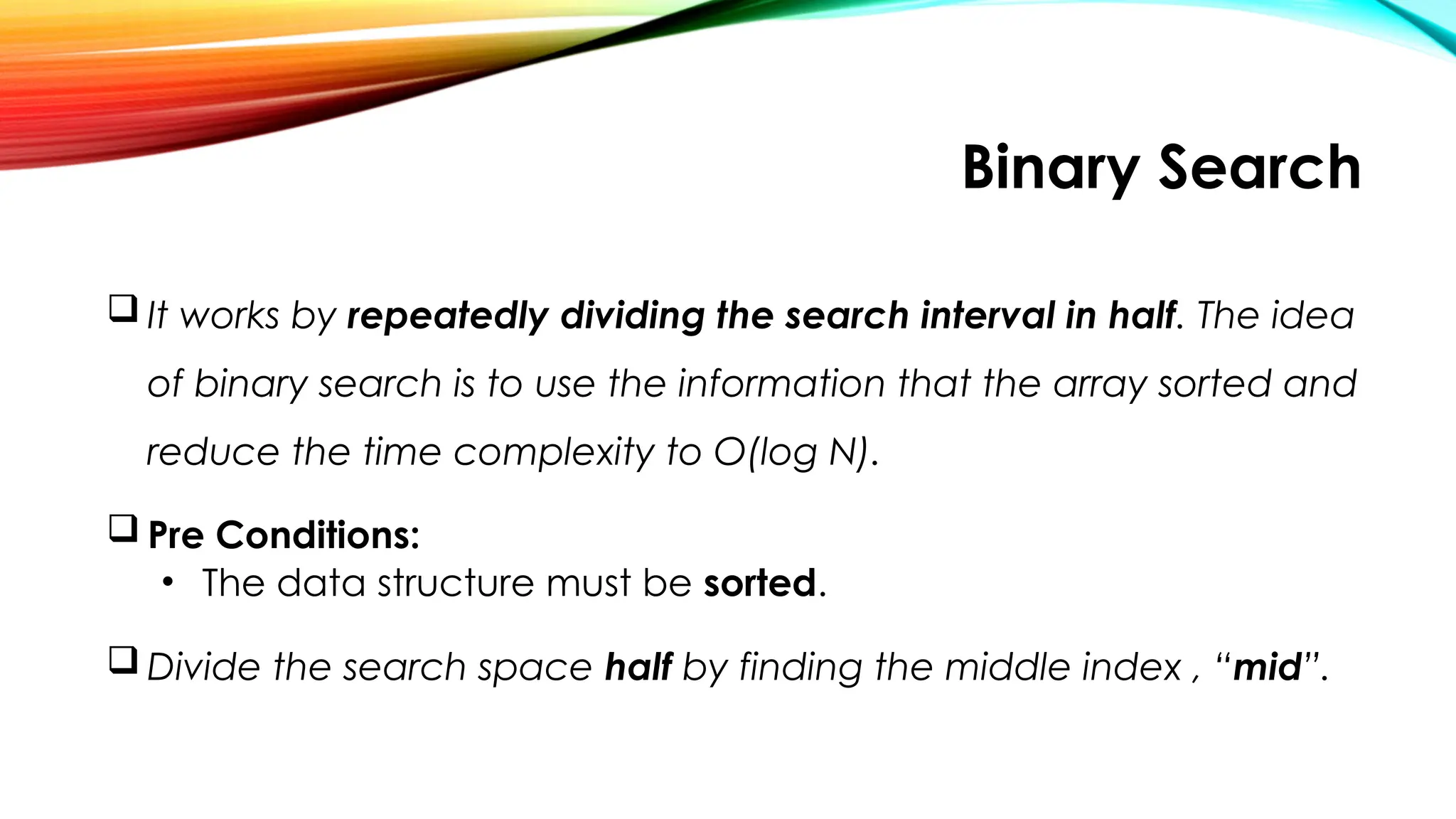
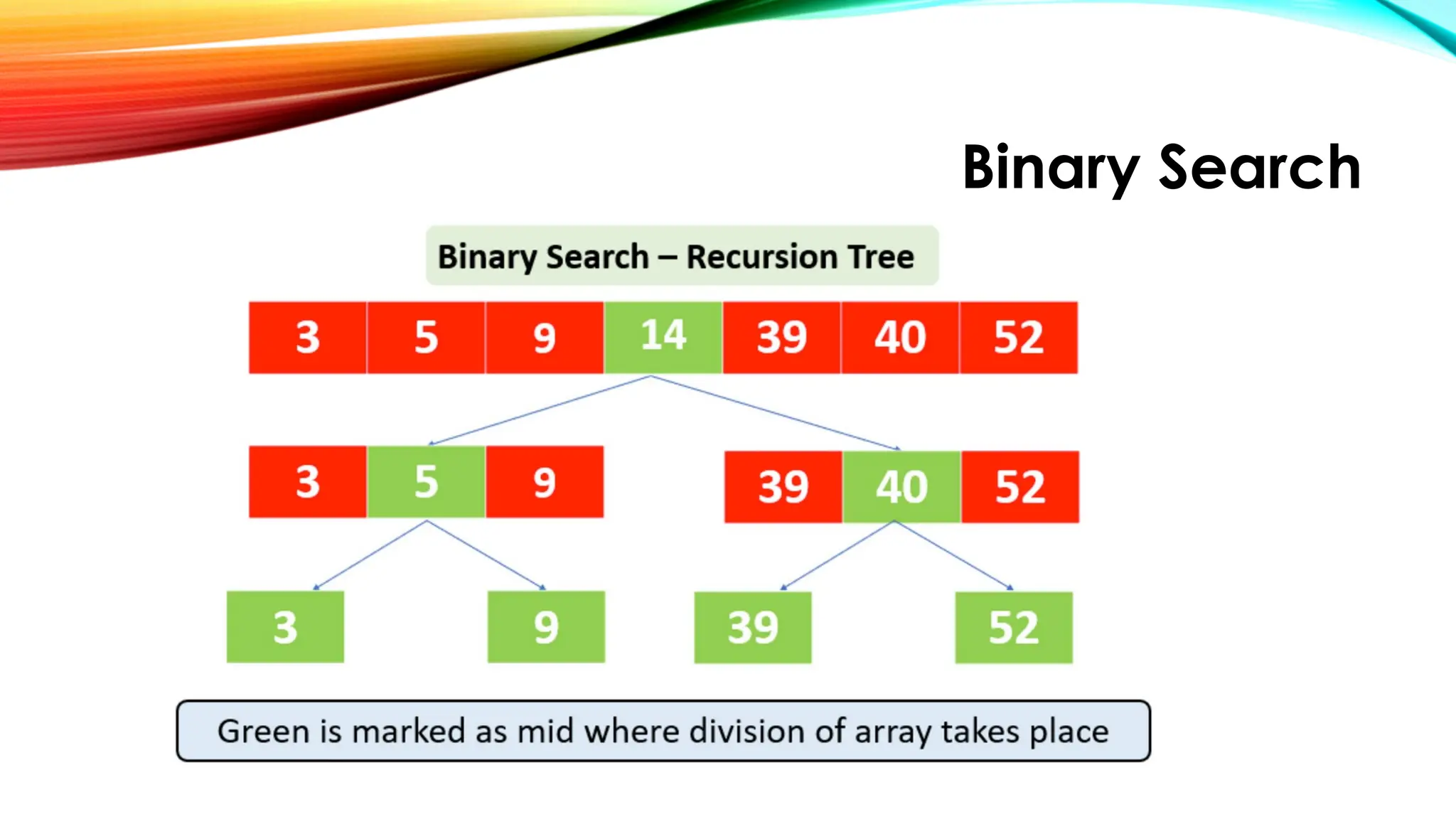
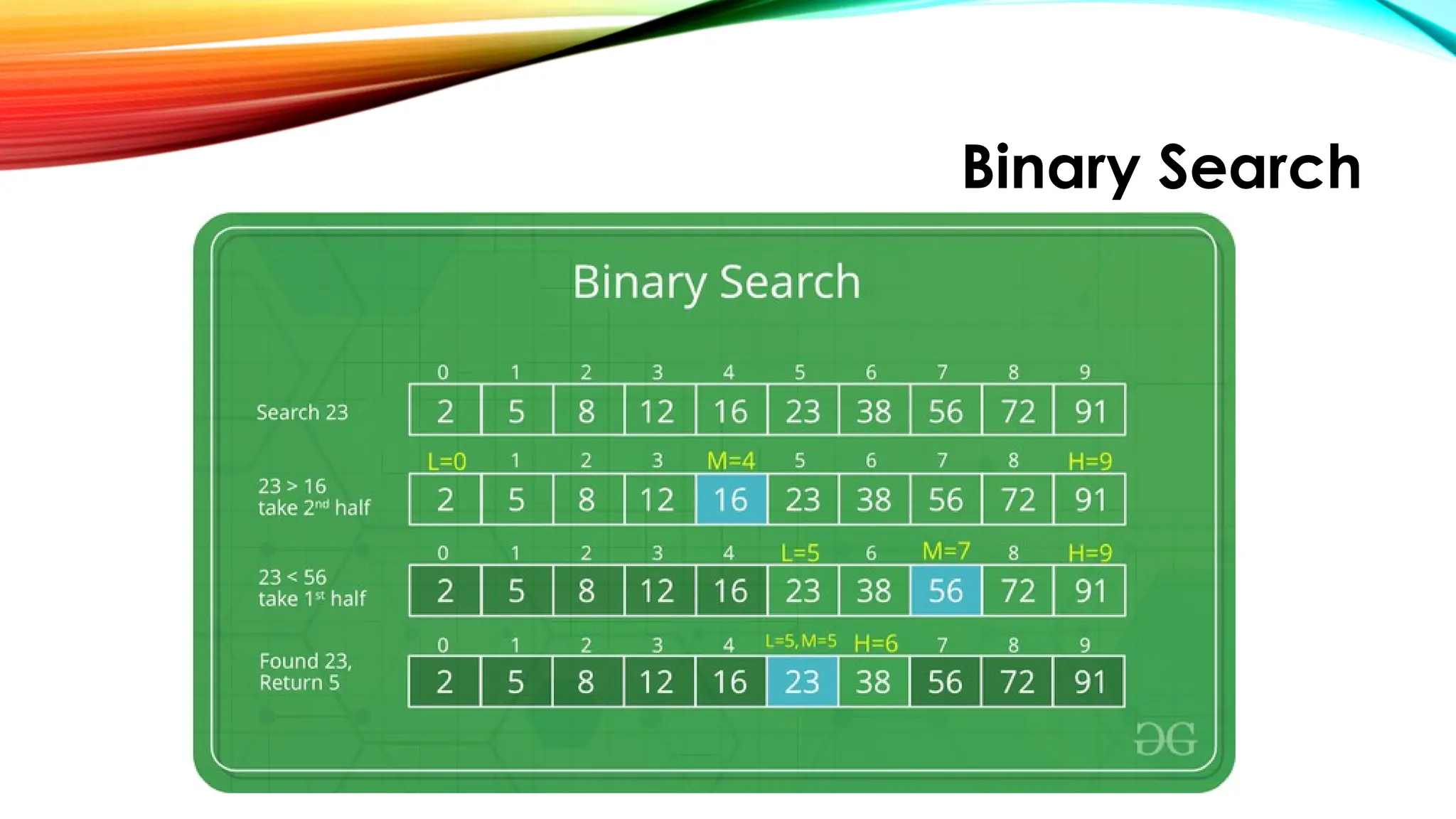
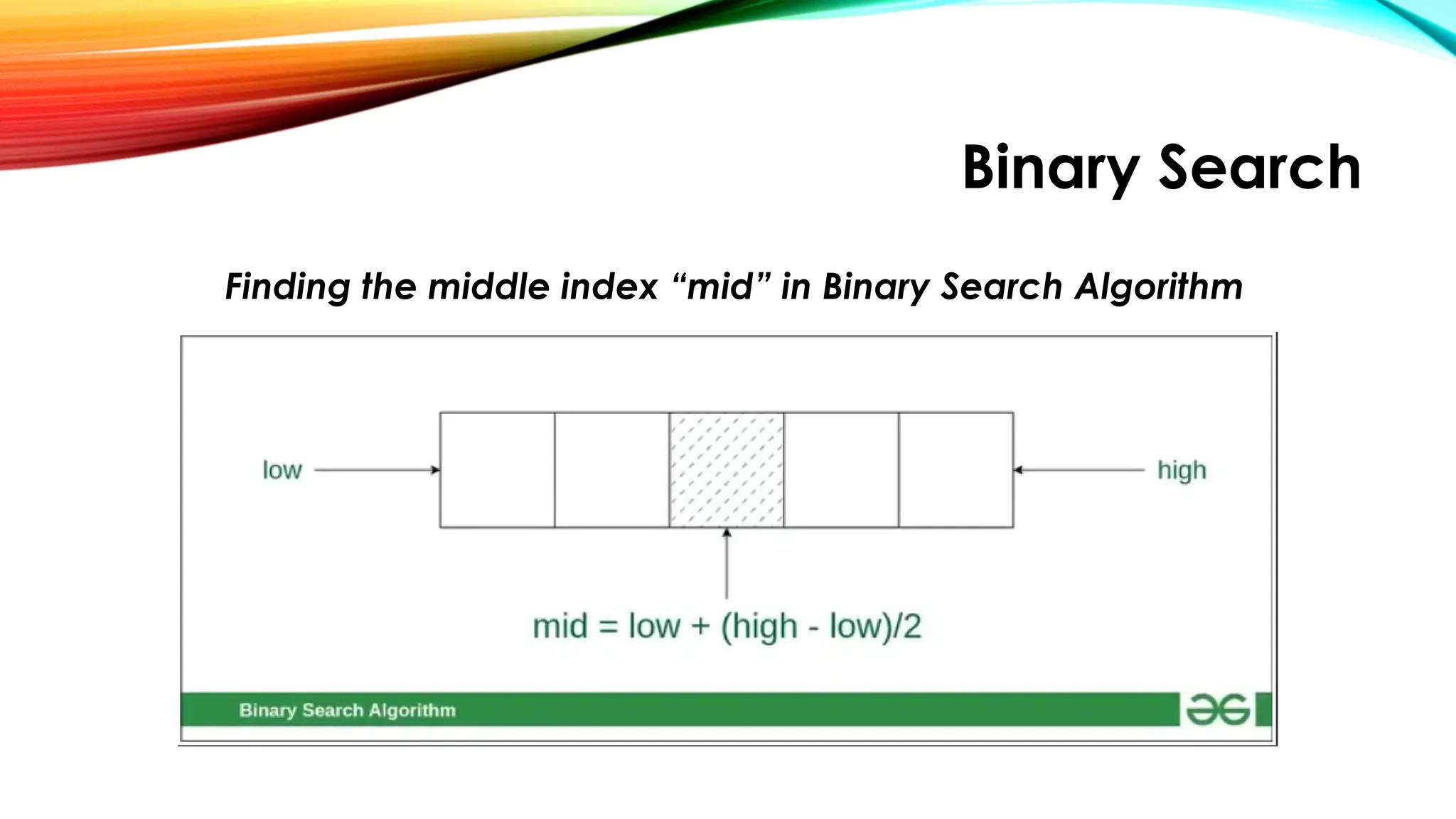
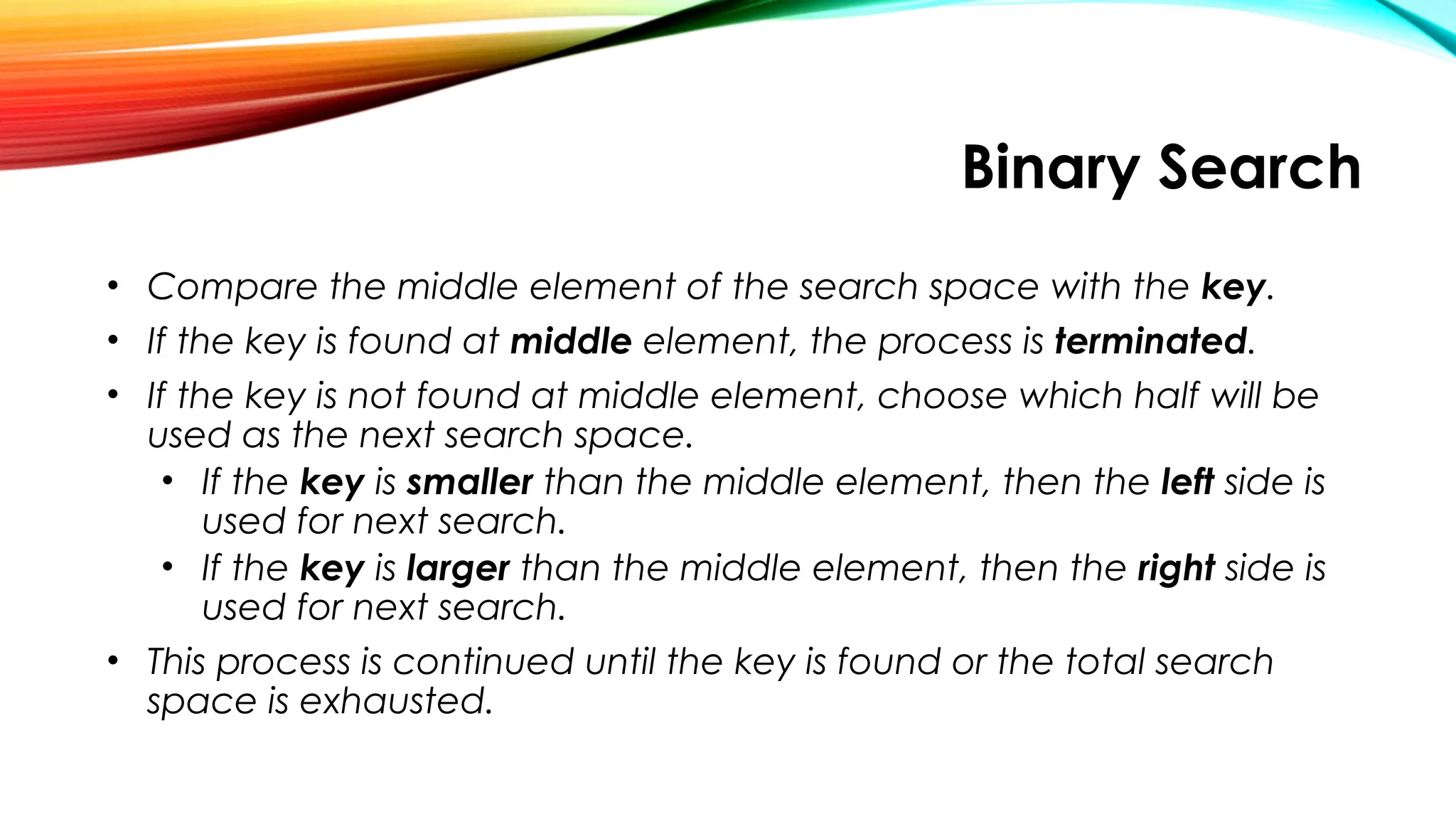
![Binary Search
Demonstration:
• Consider an array arr[] = {2, 5, 8, 12, 16, 23, 38, 56, 72, 91},
and the target = 23.
• First Step: Calculate the mid and compare the mid
element with the key. If the key is less than mid element,
move to left and if it is greater than the mid then move
search space to the right.
• Key (i.e., 23) is greater than current mid element (i.e., 16).
The search space moves to the right.](https://image.slidesharecdn.com/chapter2simplesearchingalgorithms-250922083115-051aed47/75/CHAPTER-2-Simple-Searching-Algorithms-pptx-21-2048.jpg)
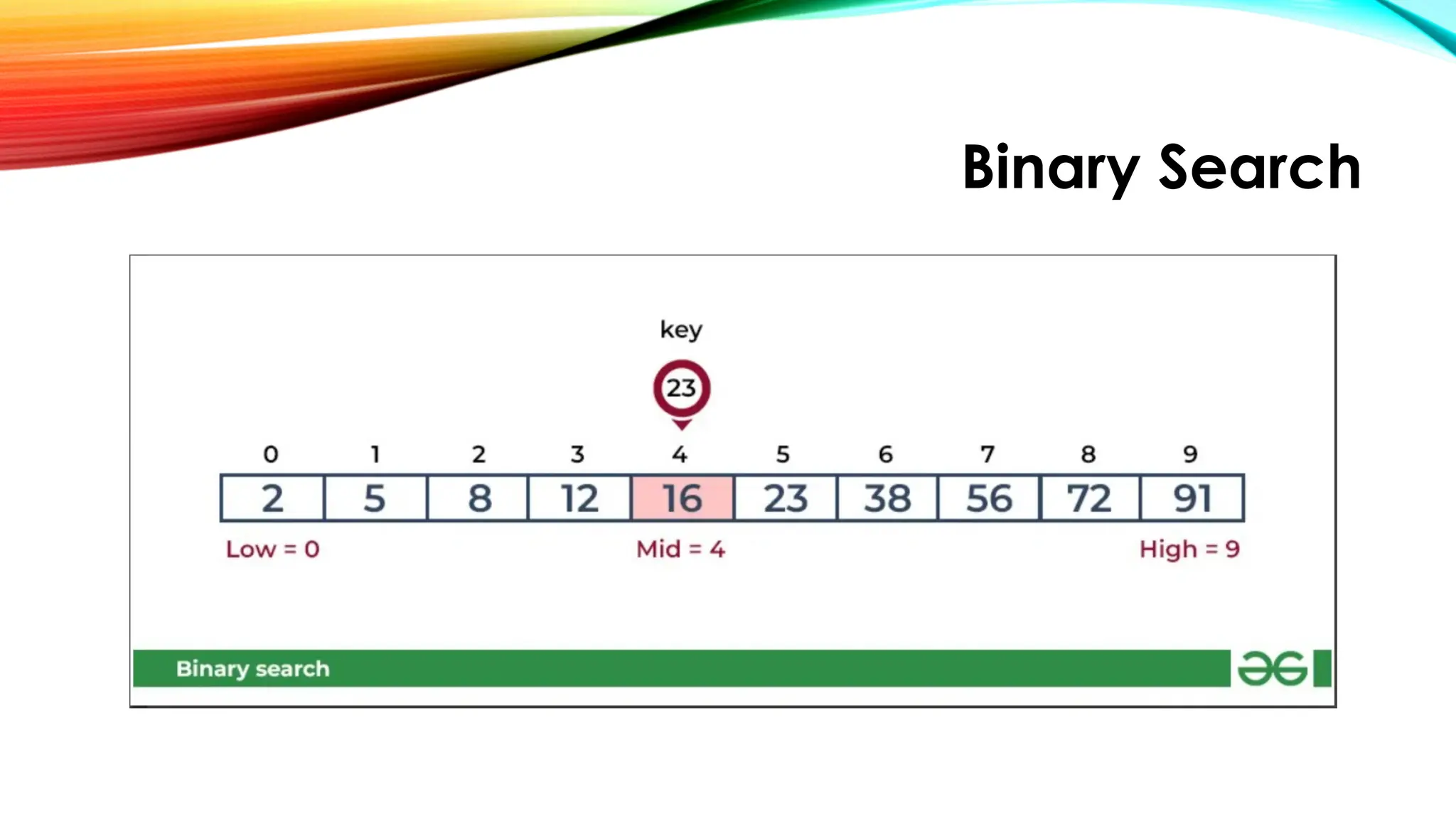
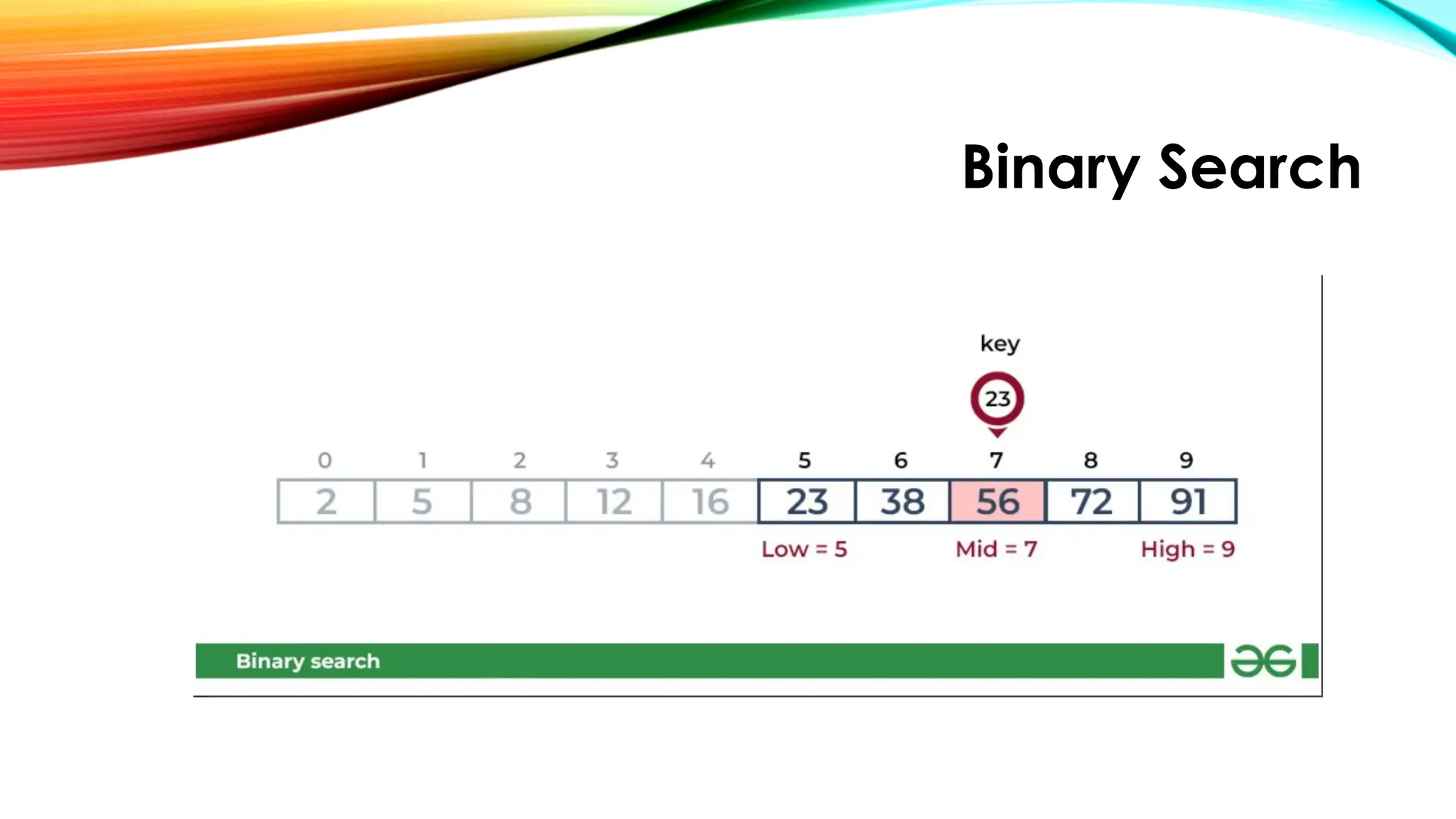
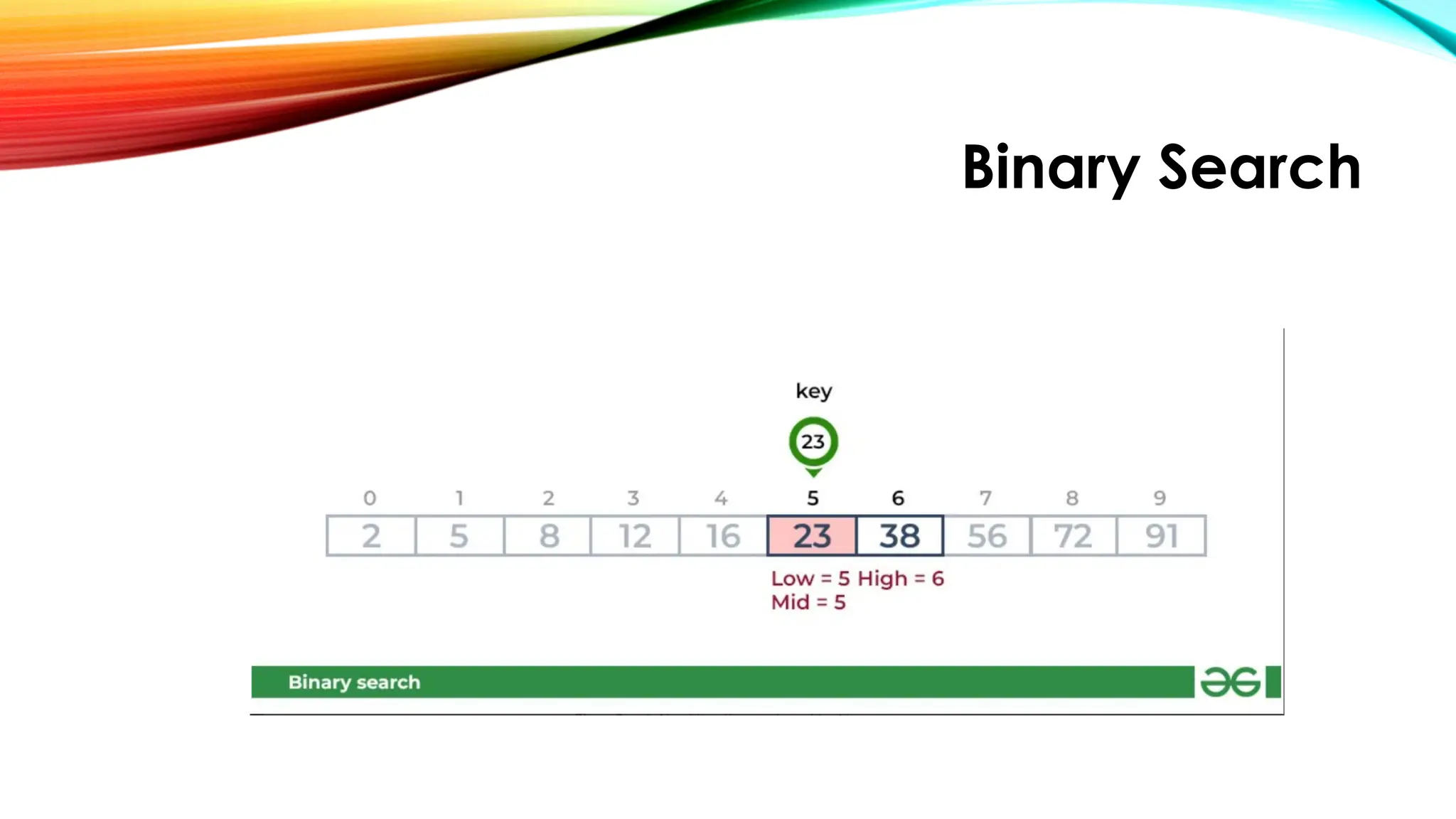
![Binary Search
function binary_search(list, target):
left = 0
right = length(list) - 1
while left <= right:
mid = (left + right) // 2
if list[mid] == target:
return mid
elif list[mid] < target:
left = mid + 1
else:
right = mid - 1
return -1](https://image.slidesharecdn.com/chapter2simplesearchingalgorithms-250922083115-051aed47/75/CHAPTER-2-Simple-Searching-Algorithms-pptx-25-2048.jpg)
